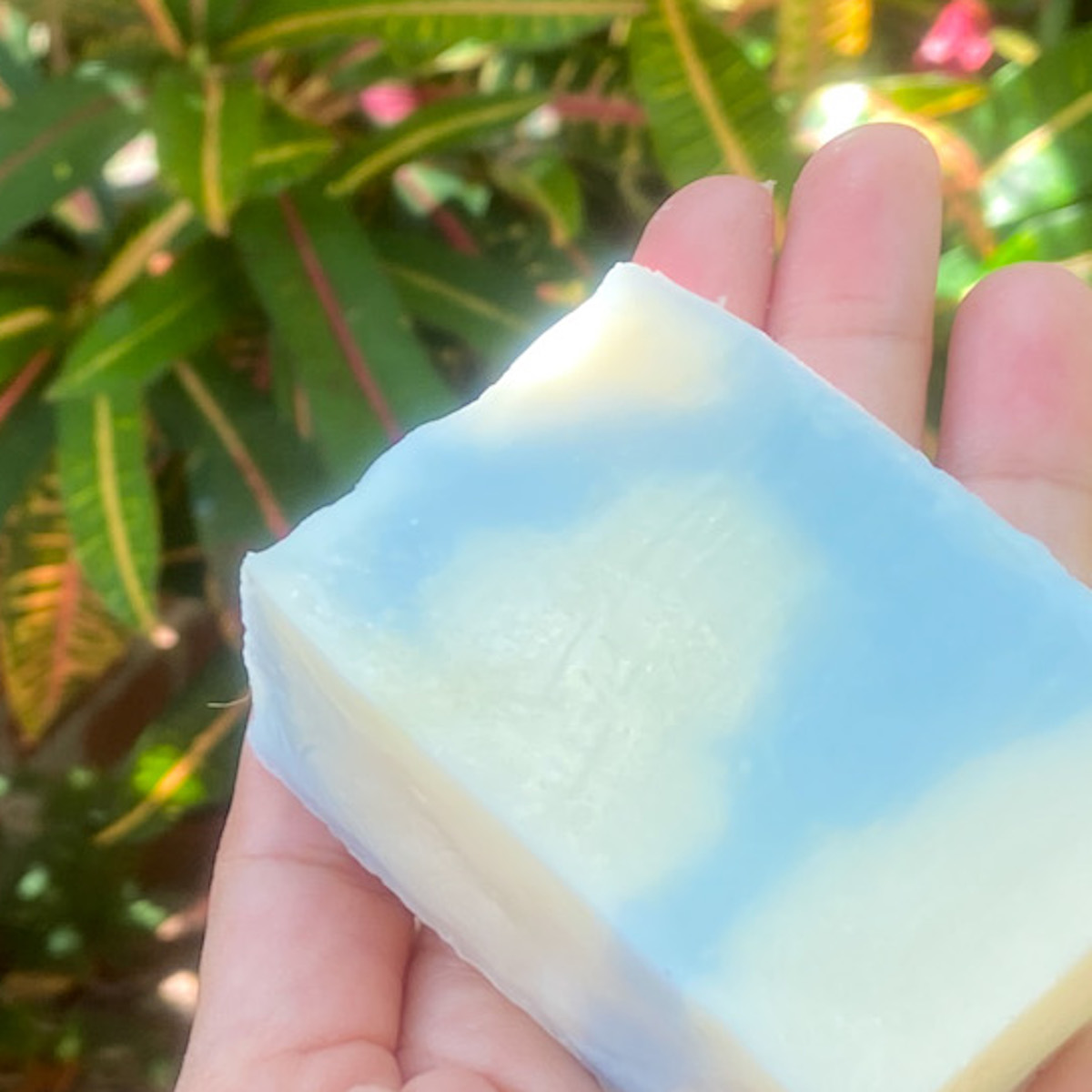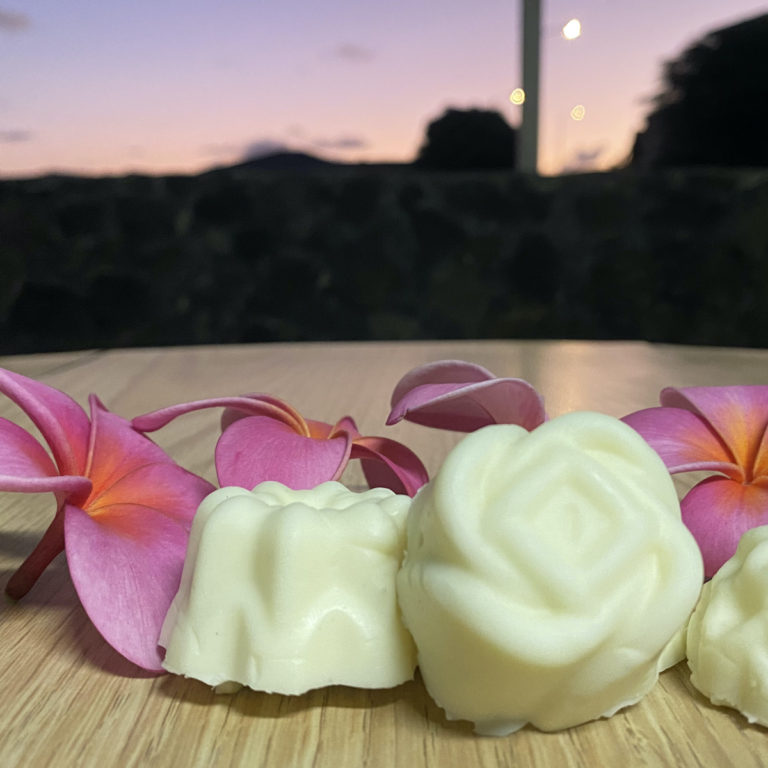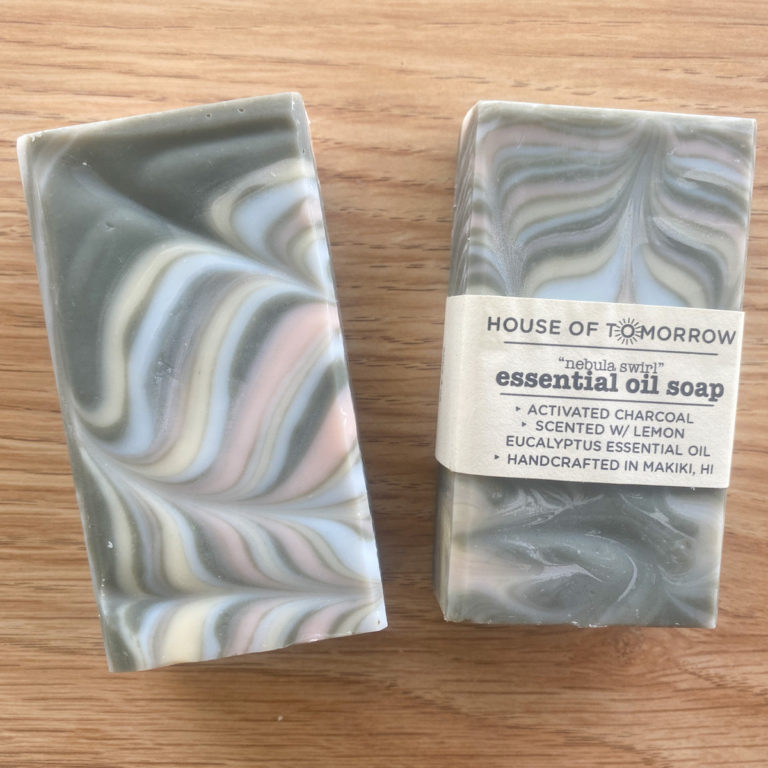Oily Cold Process Soap (Layer of Oil on Surface)
Sometimes things don’t turn out as you planned in soaping dreamland. There are more examples out there than I can count, but one we’re focusing on today is the oily cold process soap. It’s when you find a thin layer of some oily substance on the surface of your cold process soap, and you think “How in the hell could this be? I did everything right!” as you stare the fingerprints left behind in the mini oil slick covering your soap.
What exactly is this oily layer and what do we do about it?
Well, to be honest, I don’t know what it is. I’m pretty sure its just the oils from your formula that haven’t saponified. Either they haven’t saponified yet and will soon (because complete saponification can take awhile), or they never will.

So then, what do we do about it?
Sometimes you don’t actually have to do anything. Sometimes that oily layer will reabsorb back into your soap.
Sometimes you’ll use the soap once (assuming the batch you made is for personal use) and it’ll just go away because it was washed off, and a soap in use is unlikely to develop an oily layer. This is ok if your soap is for personal use, but you probably don’t want to see anything like this on soap you intend to sell or gift.
If you have a batch of oily cold process soap that you want to quickly make more presentable, try taking a slightly dampened cloth and rub it over the surface of the soap to get rid of it.
I doubt you want to do this for every bar as a soap seller, so if that’s your situation, better you adjust your formula to prevent this happening again.
The first possibility is simple – maybe your superfat is too high? Try lowering it and see what happens. 5% superfat is a popular option, and I would suggest you never go below 1% superfat. 1% superfat or higher is always a safer bet to ensure there is no free-floating unsaponified lye. Having a little more oil than is needed to ensure saponification serves as a buffer that accounts for imperfect measuring technique, imperfect scales, or just the fact that not every drop of oil you measure will make it into the soap batter because some sticks to the walls of your measuring cup or bowl.
Another possibility for your oily cold process soap is that maybe your lye sucks or you’re making it suck by master-batching it. Try switching your supplier or experimenting with master-batched lye solution vs freshly mixed.
This lye stuff is actually what I think was causing my problem with oily soap some time back. When I first started out with soapmaking for personal use, I used the lye I could find from the hardware store, which is marketed as pure (99% pure to be exact, according to the bottle). When I switched to a different supplier, the impurities visible in my lye solution was notably lower.
Then I was master-batching lye solution for awhile and at first I loved, loved, loved it because it made the actual soaping process simpler, easier, and an overall better experience for me. But sometimes soap wouldn’t turn out as great.
In talking to another soap maker, I learned that master-batching sometimes made her soaps take longer to firm up. I tried making my lye solution fresh again (and using the soap making heat transfer method whenever possible) and started getting more consistent results, and a nice, hard bar without any oiliness on the surface.
I think more than master-batching being a bad practice (because that’s not what necessarily what I think), I’m guessing storing the lye solution and not using it quickly after mixing was probably my issue. Sometimes my master-batched lye solution would be sitting around for a week or longer, which is maybe just too much time. Still, I’m sticking with freshly mixed lye solution for now.
Luckily, I haven’t run into any issues with oiliness with hot process soap, so I wonder if that’s another solution for those of you out there trying to figure out what to do about oily soap. But also keep in mind that by the time I started making hot process soap, I had already given up on master-batching my lye solution.
These are my thoughts and experiences regarding oily cold process soap. It’s frustrating, especially as a seller, but solutions are out there for you. Try experimenting with quick fixes and adjustments until you land at the perfect bar for you.






